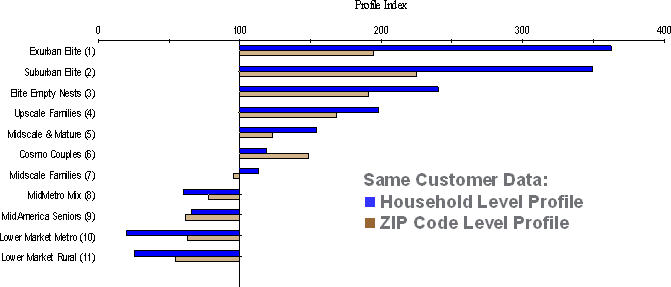Back in 2006 i wrote a note about a so called eBon concept which would make it possible for costumers to find all their receipt digitally online for later usage. The money that should drive the business were analysies like the ones mentioned below.
/Sik
Online Registration - How Location Helps Strike the Right Balance for Retailers
By Bruce Wilkinson , Nielsen Claritas July 18, 2008
Segmentation supplements online registration to improve a site's relevance to its visitors without compromising privacy, a win-win for publishers and their customers
In the more than 30 years that Nielsen Claritas has worked with clients to help determine how to identify, target and track their success in reaching their best customers through segmentation, there has rarely been an issue as thorny as online registration. The reason is that it forces online publishers to navigate the slippery slope of acquiring as much information about their sites' visitors as possible, while also providing free and open access to content, as well as protecting the visitors' privacy.
So, what's a publisher to do? Is there is some middle ground that balances these conflicting needs? The answer is yes, and, ironically, the solution is one of the best known and most commonly employed off-line tools - segmentation.
Segmentation, a geo-demographic system designed to describe and target customers, was pioneered by Nielsen Claritas in the mid 1970s, and, simply put, allows companies to know who their customers are, what they are like, where they live and how to reach them. Segmentation data also allows companies to know all this about their competitors' customers, giving them a sustainable advantage in the marketplace. Using segmentation does require that a site identify its visitors via their IP address, their behaviors or via registration.
Registration linked to segmentation at the ZIP, ZIP+4 or full address level provides data with increasing levels of accuracy. Realizing this, a number of forward-thinking publishers have deployed this approach, using it to understand their online audience(s), comparing them with their off-line audience, as well as targeting content and advertising to specific segments.
The publishers who have implemented registration most successfully have added local information to their sites and linked access to this information to the ZIP registration data. Weather, events, concerts, school information and local contractor databases all help power this application, and they greatly increase the likelihood that a visitor will provide his home ZIP Code.
While some publishers have balked at breaching the wall registration puts between unregistered visitors and a site's content, others see the attractiveness of the content and the ease of access to it as a fair trade-off for the user.
Some, however, may feel that this level of targeting doesn't get close enough to the household or individual level to provide value. To help these publishers, there is 'ZIP Plus" registration that provides a household-level code. Registrants who input a valid ZIP Code along with certain other demographic descriptors such as age receive a household-level segment code as part of their cookie.
In addition, ZIP-level targeting approaches the specificity and accuracy of behavioral targeting. The chart demonstrates this by comparing household-specific behavior with ZIP-level segmentation across the demographic spectrum. Note that the ZIP-level segmentation aligns directionally with the much more precise household information, which can help publishers target content or advertising in situations where behavioral targeting is not possible.

Some of those situations include when:
- customers have cleared their cookies, which link to clickstream data
- publishers have no have no endemic content to develop a clickstream for their advertisers
- there are new visitors to a site.
And, who wouldn't like to offer visitors more compelling content and more relevant advertising? Segmentation helps do this by complementing both ZIP-level and behavioral targeting techniques, and if used appropriately for each situation, they can work together effectively.
Source: http://www.directionsmag.com/article.php?article_id=2821&trv=1
Ingen kommentarer:
Send en kommentar